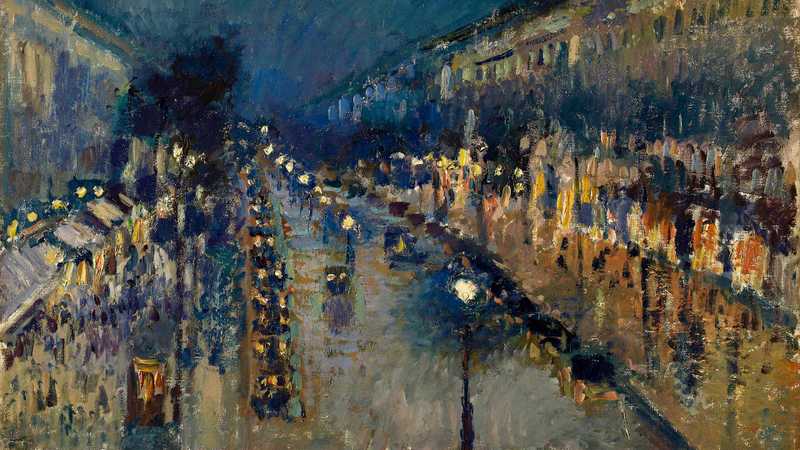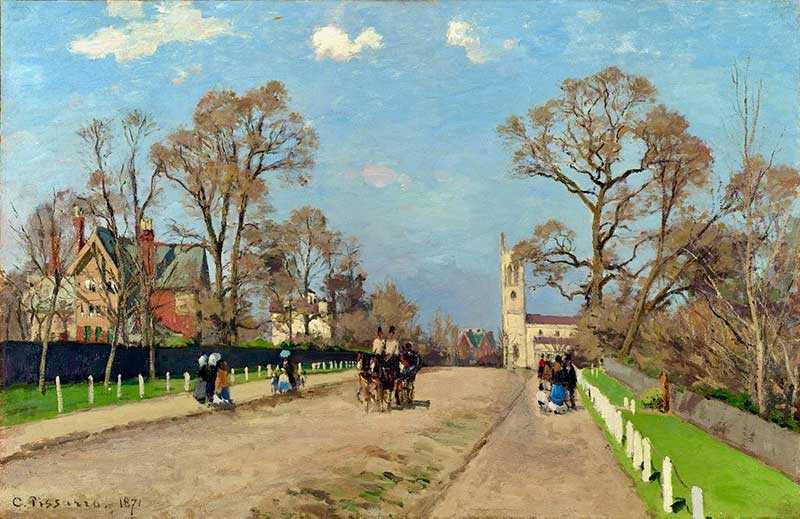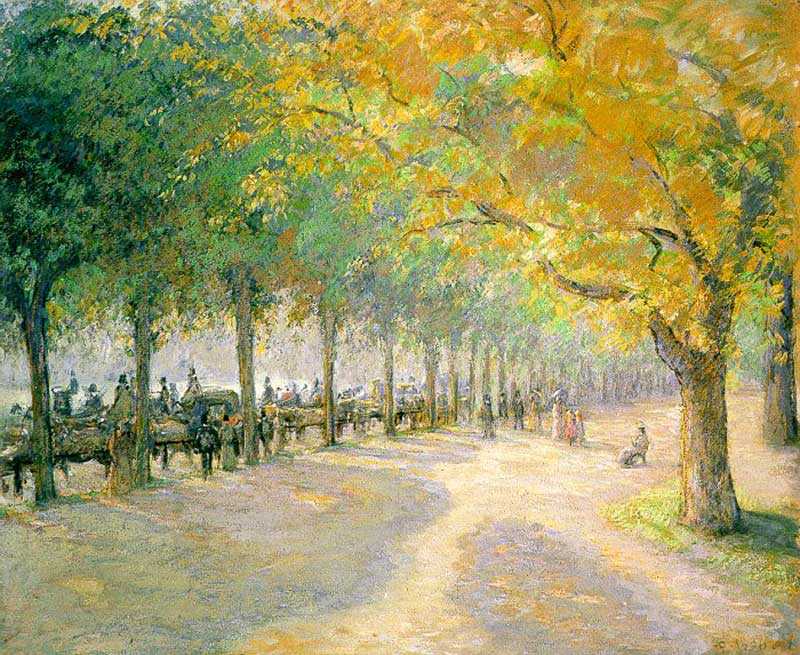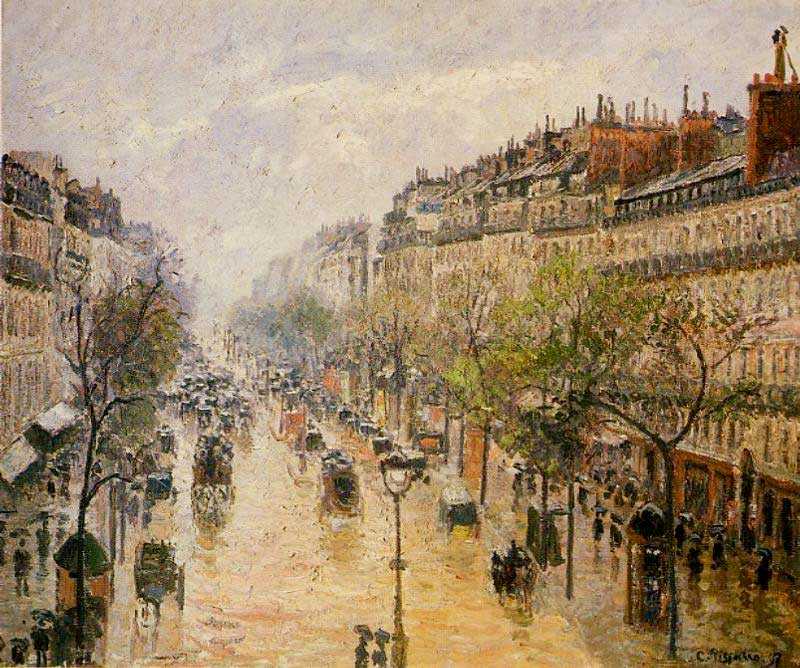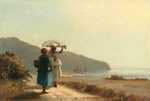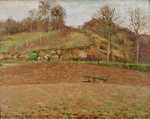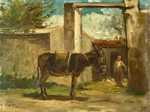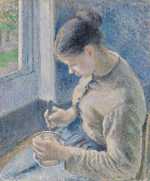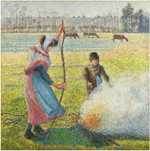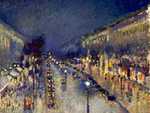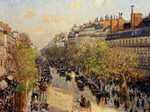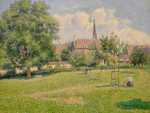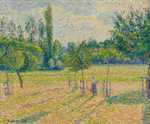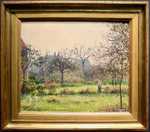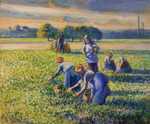1. Early Life
1830: Jacob Abraham Camille Pissarro is born on 10 July, on the island of St Thomas in the Danish West Indies. His father Abraham Gabriel Pissarro runs a hardware store in St Thomas and is married to Rachel Pomie, his uncle’s widow. The marriage is scorned by the small Jewish community and as a result, the Pissarro children grow up as outcasts on the outskirts of town.
1842: Pissarro spends his childhood years in his hometown. When he turns 12, he is sent to a boarding school in France. There he develops an interest in the works of the French artists.
1847: After his education is complete, he returns to St Thomas and is expected to join his father in his mercantile business as a clerk. Pissarro continues practicing his art at the harbor in his free time.
1849: Pissarro becomes friends with Fritz Melbye, a Danish artist. Melbye adds fuel to Pissarro’s burning desire for art and convinces him to pursue it wholeheartedly instead of ignoring it in favor of working with his father.
1851: Melbye persuades Pissarro to become a full-time artist. Pissarro leaves his father’s business.
1852: Pissarro leaves St.Thomas and moves to Venezuela at Melbye’s insistence, where the two artists work in a studio with Melbye acting as his instructor and mentor.
1855: Pissarro moves to Paris and his arrival coincides with Paris’s Universal Exposition where he is exposed to several contemporary artists, including the famed names of the time: Ingres and Delacroix. Pissarro is particularly taken with the works of Corot, a French realism painter. Pissarro receives informal mentoring from Corot.
One of the mentors in his early years in France includes Fritz Melbye’s brother Anton Melbye. In his first submission to the Salon in the year 1859, Pissarro declares himself “Pupil of A. Melbye,” a title he would claim until 1866.
Interesting fact...
In his early years presenting works with the salon, (1859 to 1866) Pissarro wrote down names of Camille Corot and Anton Melbye as his mentors in the catalogue but in 1868 he presented himself as an independent painter without giving credit to anyone.
1856: Pissarro starts formal art education at the esteemed École des Beaux-Arts.
2. Pissarro and Impressionism
While Pissarro may not have received the fame and recognition he deserved, his quiet influence on impressionism and his role in shaping the movement can not be ignored.
His artwork for the early impressionism period is characterised by loose shapes and carefree brushwork, as well as a focus on brilliant colors and textures. Pissarro is also fond of painting en Plein air; his works show a fondness for portraying the effects of light on objects.
1859: Pissarro joins the Académie Suisse, a studio that lends more freedom in artistic tastes than the more strict and traditional École des Beaux-Arts. It is here that Pissarro meets his future contemporaries and partners in revolutionising art: Claude Monet, Paul Cézanne, and Armand Guillaumin. Monet further introduces him to Pierre-Auguste Renoir and Alfred Sisley. This is also the year that Pissarro’s submission to the Salon is accepted for the first time.
The 1860s: Pissarro grows dissatisfied with the strict rules of the Salon and École des Beaux-Arts. Throughout the 60s decade, Pissarro would join the young contemporaries including Renoir and Monet at Cafe Guerbois, holding lively discussions over politics and arts. Being older than the artists in the budding impressionist group lends authority to Pissarro and his opinions are respected.
1860: Although Pissarro has his studio in Paris, he prefers painting outdoors, capturing scenes from nature and rural life. He becomes romantically involved with his mother's maid, Julie Vellay.
1861: He joins the Louvre as a registered copyist.
1863: Pissarro and Julie have their first child named Lucien. They would eventually have 8 children altogether.
1869: Pissarro paints View from Louveciennes (1869-70), shortly after he moved to Louveciennes with his family. His painting is inspired by Corot’s style as it has many parallels to his work.
1870-71: Pissarro marries Julie Vellay. The domestic bliss is short-lived as the Franco-Prussian war breaks out and Pissarro flees to London with his family. By December 1870 they are settled in an area called Westow Hill in Upper Norwood. Pissarro meets Paul Durand-Ruel, the art dealer who would eventually become the impressionist group’s greatest supporter and often the means of turning around their fortunes by holding exhibitions for them. Durand-Ruel buys two paintings from him.
Pissarro paints ‘The Avenue, Sydenham’, a painting with light shades and bright colours, during his time in London
On his return to Paris, Pissarro discovers that most of his earlier works have been destroyed during the war in his absence.
1873: Pissarro starts thinking about creating an alternative platform for artists who are fed up with the restrictive standards of the Salon. He finds supporters for his idea in Renoir, Monet, and Degas. Together they start planning for their independent exhibition.
1874: Pissarro and Monet organise the Societe Anonyme Des Artistes, Peintres, Sculpters, Graveurs et Lithographersin a studio situated on the Boulevard des Capucines. The first impressionist exhibition is held from 15 April 1874 until 15 May 1874. Pissarro has five works presented in the exhibition including Hoar Frost and The Old Road to Ennery.
1876: The group organises the second exhibition despite the harsh reviews of the first. It is held at the gallery of Durand-Ruel. Pissarro displays 12 works, which include landscapes portraying different seasons.
1881: Pissarro paints Young Peasant Having Her Coffee (1881). This is notable because it shows women going about their everyday activities and his focus is on the rural workers and the dignity with which they carry themselves in their work instead of painting the wealthy Parisians.
In the seventh exhibition of 1881, Degas plays an active role by recruiting artists for the exhibition, a fact that Pissarro is cool with, but other artists such as Caillebotte feel simmering resentment for what feels like a takeover by Degas.
By this time some major artists like Renoir and Sisley have left, but Pissarro remains steadfastly loyal to the movement and presents works in each of the exhibitions held from 1874 to 1886.
3. Pissarro and Pointillism
Pissarro always had an innovative approach towards his creative work and experimented with different styles throughout his career.
By the 1880s he had moved into a Post-Impressionist period and fiddled with Neo-Impressionist ideas. He claimed to be dissatisfied with what he termed "romantic Impressionism," and he turned to a different technique of painting called pointillism, which he defined as a "scientific Impressionism". In the later years of his life, he would return to the initial loose style of brushwork, but his gradual shift in interest meant a decline of the movement he worked so hard to maintain in all those years.
1886: Pissarro and his son Lucien both submit Neo-Impressionist paintings to the last impressionist exhibition. Pissarro’s work was displayed in a separate room along with the work of Georges Seurat and Paul Signac, which signaled Pissarro’s changing path in his artistic career.
Pissarro’s experimentation with pointillism didn’t last long but there are traces of it in his later works which shows that he never completely abandoned the technique.
4. The Mature Period
After leaving behind pointillism, Pissaro moves into a new phase which is well received by collectors and critics.
As a result, Pissaro, who has always struggled with money problems, is able to gain some financial stability in his life.
His new style shows a return to the original style of impressionism but the subject is different: instead of painting from nature, Pissarro paints urban scenes. This makes him stand apart as the urban landscape was something that was being rejected by contemporary artists of his time.
One example of his most famous work from this time, painted from his hotel room, is the Boulevard Montmartre series - a composition that he painted again and again with changes in views, in the time of the day, and in the shifting seasons.
5. Pissarro's Later Life
In the twilight years of his life, Pissarro suffered from an eye infection that put an end to his Plein-air painting and he resorted to painting while looking out the windows of his hotel room (which is how the Boulevard Montmartre series came into being).
1889: Keeping true to his tradition of innovation, Pissarro delves into printmaking and joins the Society of Painters and Printmakers, the founders of which were Henri-Charles Guérard and Félix Bracquemond. The aim of this society was to show the work of an artist alongside prints made by them.
1890: Pissarro moves to England, and during his stay paints some scenes of central London. He goes to England again in 1892, this time painting and capturing scenes in Kew Gardens and Kew Green, and again in 1897 and produces several paintings of Bedford Park, Chiswick.
1893: In March of 1893, Durand-Ruel organises a major exhibition in Paris with 46 works by Pissarro and 55 paintings by Antonio de La Gandara. However, Pissarro does not receive as many enthusiastic reviews as Gandara does.
1894: Pissarro gets some of his prints published in L’Estampe Originale.
1903: Pissarro dies on 12 November in Eragny-Sur-Epte and is buried in Pere Lachaise Cemetery in Paris.
6. Pissarro's Legacy
1980s: Pissarro’s work only begins to gain traction and acknowledgment. For the most part, since his death, his work was ignored although it is not certain whether it was due to rising antisemitism in the West in the late 19th and early 20th century or some other factors.
2005: By 2005, some of Pissarro’s works were fetching a price in the range of 2 to 4 million US dollars.
2017: Pissarro is back in the news due to a controversy regarding Pissarros’s painting Picking Peas. The painting belonged to Simon Bauer and was confiscated from him during the German occupancy of France. It was bought by an American couple in 1994. Earlier in 2017, the Bauer descendants started legal proceedings for the retrieval of the painting. In November 2017, a French court ruled in favor of the Bauer family, stating that the painting belonged to them.

